Underrated Sci-Fi Movies Of The 1980s
In between some all-time bangers, the 1980s yielded some genre gems ripe for rediscovery.
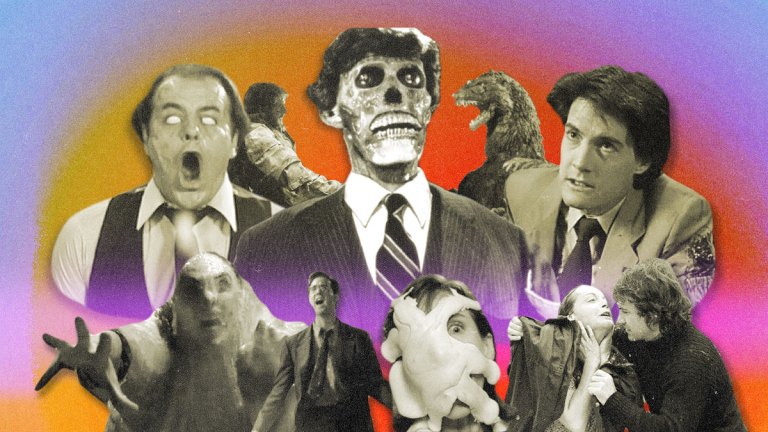
While the 1970s was known as a wild, bold, experimental time in modern cinema—which extended to all genres, including science fiction—the 1980s were best known for… well, we don’t know what, exactly. The rise of the erotic thriller, the action superstar, and cookie-cutter safe high-concept star vehicles, perhaps? As for sci-fi, the decade was marked by both undisputed blockbusters, including the Star Wars and Star Trek sequels, Aliens, and E.T.: The Extra-Terrestrial, as well as some inarguable classics like The Thing, Tron, and Blade Runner. Intriguingly, the more risky ones needed years to find their audience and critical acclaim.
At the same time, sci-fi began to rely less on literary adaptations of the previous decade (like Logan’s Run, for example) and more on crossing its streams with other genres, like horror, the Western, and the action thriller—making somewhat of a turn away from the idea-driven films that had come before. That doesn’t mean the decade didn’t have its share of underrated favorites, however. Some of these were heralded at the time, others less so, but they’re mostly all great (or at least entertaining) examples of filmed science fiction continuing to find new and different ways to move forward.
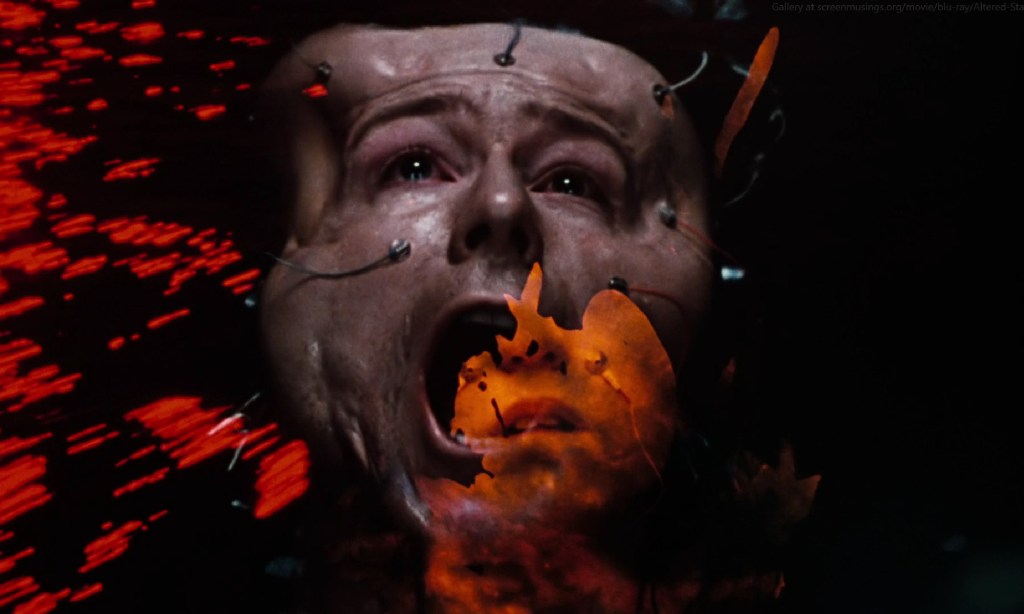
Altered States (1980)
This genuinely trippy movie was directed by Ken Russell, the British provocateur known for films like The Devils, Tommy, and Lair of the White Worm, and it is based on a novel by Paddy Chayefsky (Network), who also wrote the screenplay but clashed with Russell over the film. We’re not sure what Chayefsky was after, but Russell’s film is gloriously, deliriously weird, as a professor researching altered states of consciousness (William Hurt in a magnetic film debut) finds himself journeying first mentally and then physically backwards to the very beginnings of life itself.
Hurt, Blair Brown as his wife, Bob Balaban, and the rest of the cast are spellbinding, particularly in the rapid-fire way they deliver Chayefsky’s dialogue and almost non-stop outpouring of mind-bending ideas. But the film really belongs to the always outrageous Russell, who unleashes a series of jaw-dropping sequences that find Hurt devolving into everything from a primitive ape-man to a blob of primordial goo. Altered States is exhausting, exhilarating, and intensely cerebral, all at the same time.
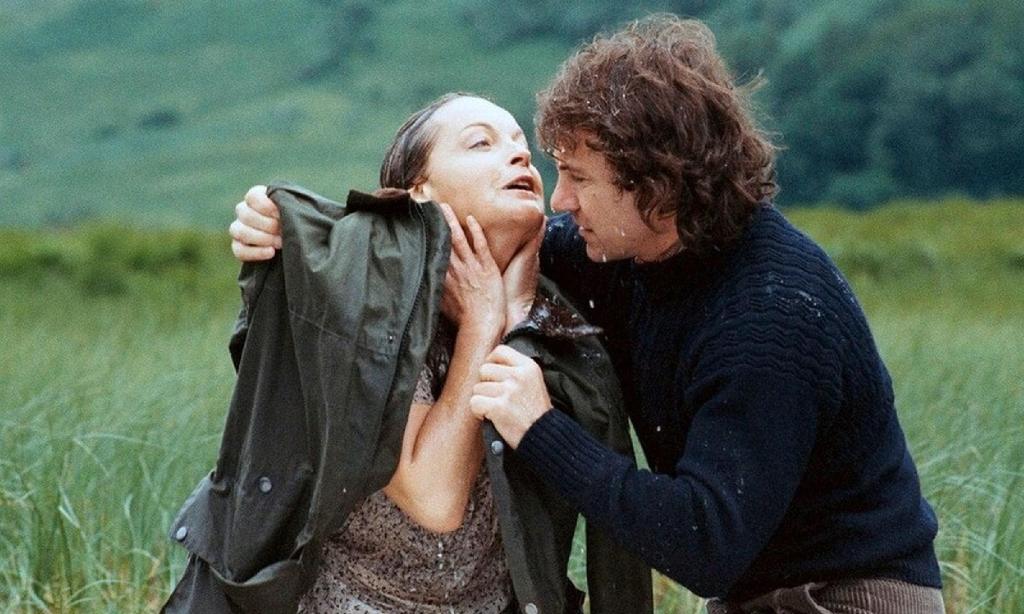
Death Watch (1980)
From French director Bertrand Tavernier, the little seen (at least in North America) Death Watch seems almost like a throwback to the more socially astute sci-fi cinema of the ‘70s. Based on David G. Compton’s novel The Unsleeping Eye, Death Watch stars Harvey Keitel as a man who has a camera and transmitter implanted behind his eyes so that he can secretly film (for the TV network he works for) the last months of a woman (Romy Schneider) who is dying from an incurable disease. Although the woman initially accepted the network’s offer to make a reality show about her death, she has reneged on the deal and fled—only for Keitel’s character to find her and covertly keep the show going.
Made more poignant by Schneider’s own death at 43 just two years later, Death Watch is unnervingly on-target about the way that reality TV has become part of the fabric of our lives decades after the film was released. It’s a slow-burn movie, very much of its time and its European aesthetic, but still incredibly prescient about the ever-present cameras that infiltrate every aspect of our lives.
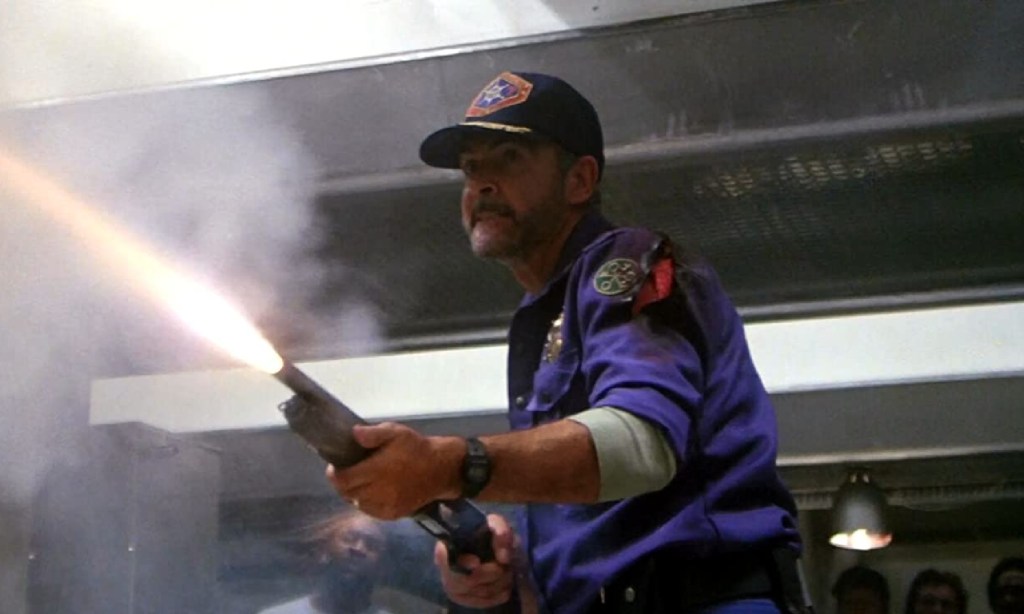
Outland (1981)
Still in his post-Bond wilderness years, Sean Connery manages to redeem his participation in ‘70s sci-fi misfire Zardoz with this loose remake of High Noon, set on a mining colony on Jupiter’s moon Io. Connery plays a marshal sent to maintain law and order at the colony, only to learn that it’s a den of corruption in which he can trust no one and where he may not survive for long.
Directed and written by Peter Hyams (who shows up again a couple of slots lower on this list), Outland doesn’t hide its Western roots and makes the most out of its frontier setting, where the living and working conditions are so tough that drastic measures are taken to keep the mining operation afloat. Connery is rock-solid in the role of Marshal William O’Niel, foreshadowing the tough cop he would play a few years later in The Untouchables. Greeted with mixed reviews and tepid box office, Outland is no classic but deserves another look as one of its star’s more striking, lesser-known efforts.
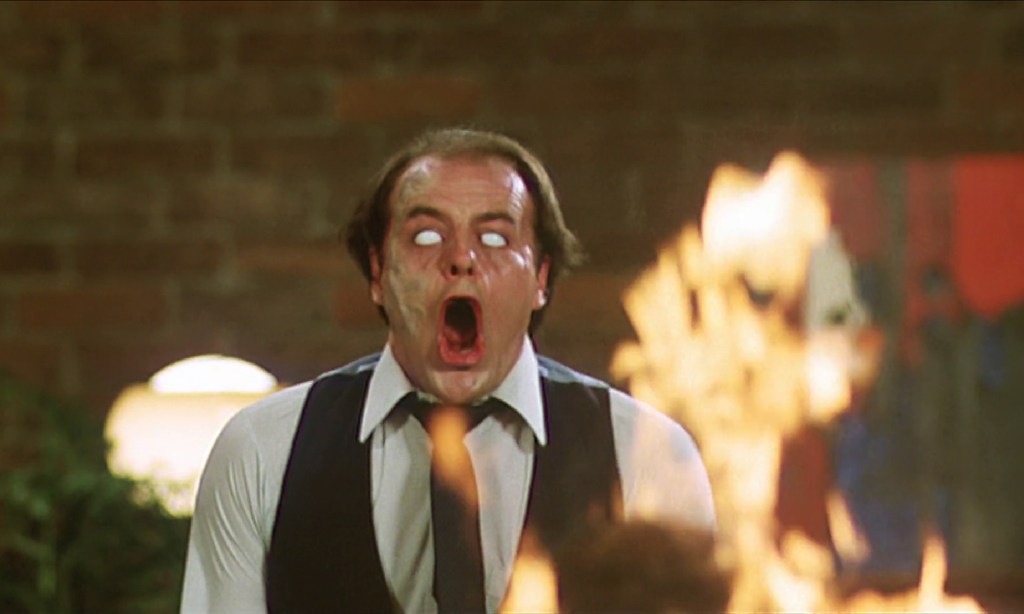
Scanners (1981)
It took him seven feature films, but Scanners was the first movie from the visionary Canadian filmmaker David Cronenberg to actually make some kind of mark (if a relatively small one) at the box office and set the stage for the director’s future triumphs. Scanners was also probably Cronenberg’s first film with overt sci-fi elements, as a shadowy security and weaponry company seeks out a new breed of dangerous telepaths, called scanners, for its own use—but the scanners themselves have other plans.
At the time Cronenberg’s most elaborate and complex production, Scanners was not particularly well-received by critics at the time of its release. But the film’s searing imagery—its famous exploding head sequence and the climactic, gruesome telepathic duel between two powerful scanners—made it a favorite with genre fans. In the years since its release, the movie’s themes of human evolution, illicit drug experimentation, and consciousness expansion have been reappraised and rightfully praised in the context of Cronenberg’s long career.

2010 (1984)
It was already controversial enough when science fiction titan Arthur C. Clarke wrote a novel, 1982’s 2010: Odyssey Two, that served as a sequel to his book 2001: A Space Odyssey, which was written at the same time that Stanley Kubrick wrote the film but diverged from the text in a number of ways. Since Kubrick’s film was a masterpiece of ambiguity and mystery, the idea of continuing the story and explaining a lot of what happened in it seemed like folly.
But Peter Hyams’ film of Clarke’s sequel novel is not just largely worthy of its predecessor, even without ever equaling it; it’s also a damn fine sci-fi movie in its own right. Roy Scheider leads a joint American-Soviet mission to discover what happened to the spaceship Discovery and its crew, only to encounter more enigmas and ultimately what the unseen aliens are up to out there by Jupiter. The film is solidly science-based and full of ideas. The cast, which also includes John Lithgow, Bob Balaban, and Helen Mirren, crackles. And there are a few moments of genuine awe. If you had to do a sequel to one of the greatest movies of all time, you could do a lot worse.
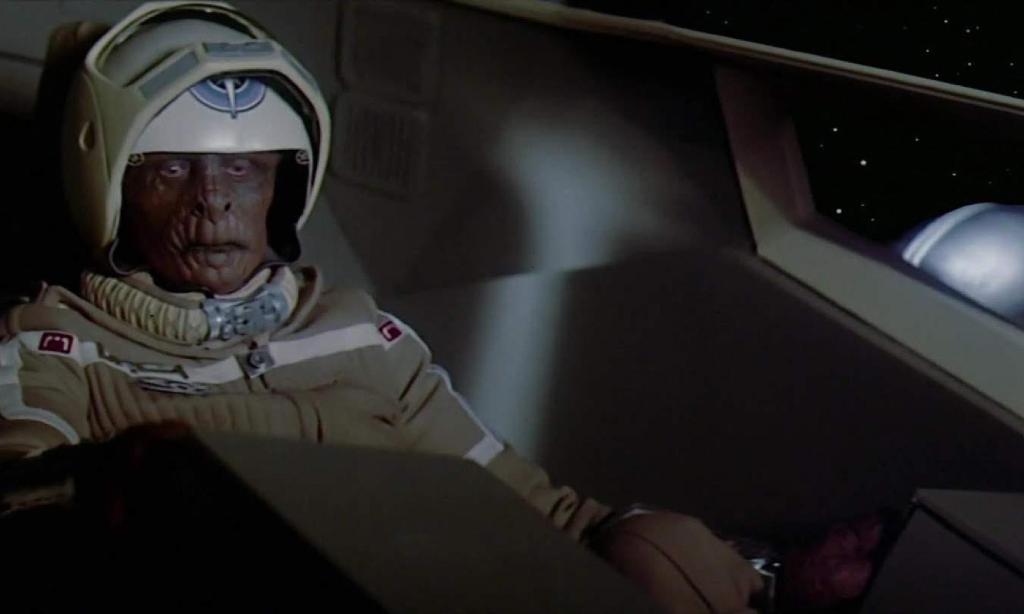
The Last Starfighter (1984)
It was inevitable that the success of Star Wars would inspire a round of knockoffs, and this one has the added charm of lifting ideas from Tron as well, as a trailer park teen named Alex (Lance Guest) discovers that the creator (Robert Preston) of an arcade video game he plays is actually an alien being who is using the game to recruit pilots for an interstellar war.
The second sci-fi film after Tron to use CGI in a substantial way for visual effects, The Last Starfighter was directed by Nick Castle, best known for playing Michael Myers in the original Halloween and the recently completed sequel trilogy. Featuring a cast that mixed unknowns with well-worn character actors, The Last Starfighter blatantly owes its existence to Star Wars as much as George Lucas’ saga owes its to Flash Gordon and Buck Rogers. But Castle’s film has a shaggy appeal all its own, and works pretty well as a fast-paced, kid-oriented space opera.
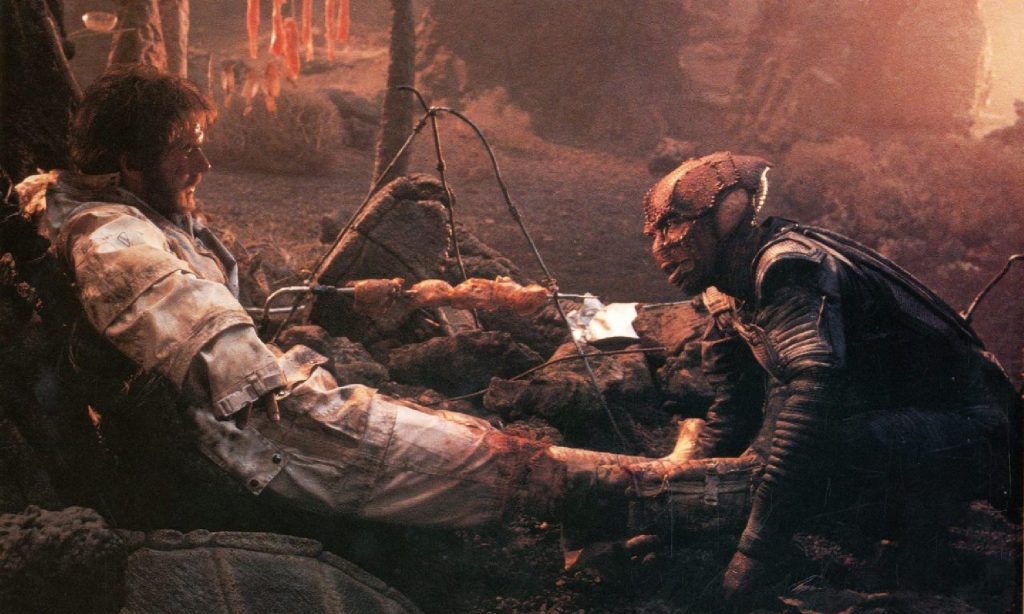
Enemy Mine (1985)
The terrific German director Wolfgang Petersen (Das Boot, The NeverEnding Story) helmed this space adventure based on a novella by esteemed sci-fi author Barry B. Longyear. Dennis Quaid stars as an Earth pilot named Davidge who’s part of a human force fighting a war against the alien Dracs. When Davidge and a Drac fighter named Jeriba Shigan (Louis Gossett Jr.) shoot each other down on a hostile planet, they are forced to cooperate in order to survive and eventually become friends—with Davidge left to care for Jeriba’s child after the Drac (whose race self-fertilizes) dies in childbirth.
The troubled production, which Petersen took over after the first director was fired , also turned into an expensive flop at the box office. But the thoughtful script and committed performances from Quaid and Gossett (the latter under heavy but impressive makeup) make Enemy Mine an affecting portrait of people overcoming their differences. The gender-bending nature of Gossett’s character was pretty progressive for moviegoers back then. For the few that actually saw the picture, anyway.
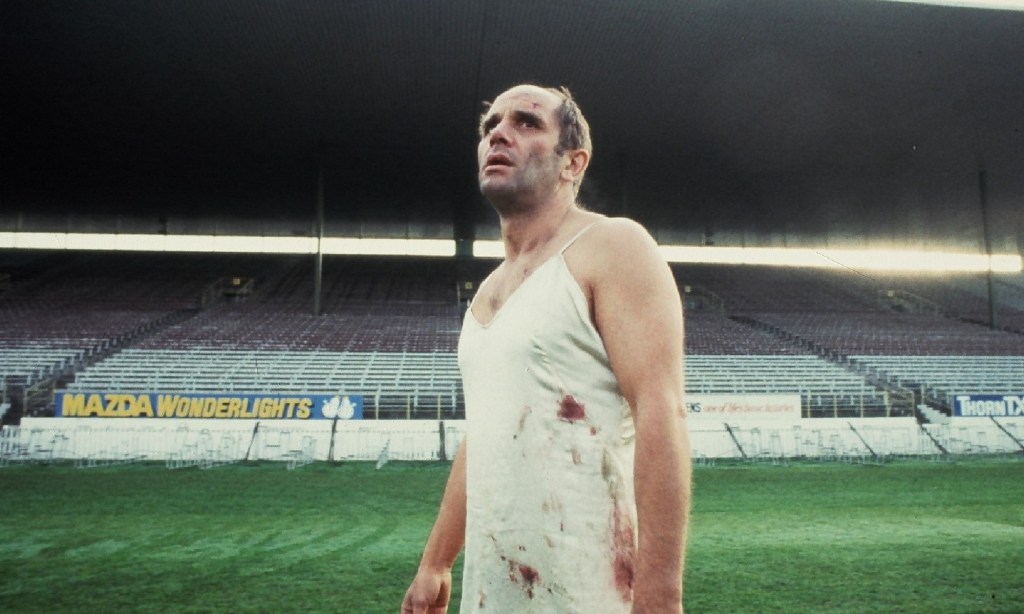
The Quiet Earth (1985)
This little New Zealand gem has been compared to older post-apocalyptic dramas like The World, The Flesh, and the Devil, in which only a handful of people (usually two men and a woman) manage to survive a massive, humanity-destroying disaster but may not make it out of their love triangle alive. The more recent Z for Zachariah also fits this bill. In any case, The Quiet Earth is about more than that too. It’s about what humans will do in the face of loneliness and events that they cannot comprehend.
In this instance, the activation of an experimental global energy grid results in almost everyone on the planet disappearing—all except Zac (Bruno Lawrence), Joanne (Alison Routledge), and Api (Pete Smith), who figure out a plan to try and stop the destructive effect the experiment is having on reality. The strong performances from the cast, eerie atmosphere, and unsettling, ambiguous ending all made this a minor classic in its home country, and a film that more audiences around the world should see.
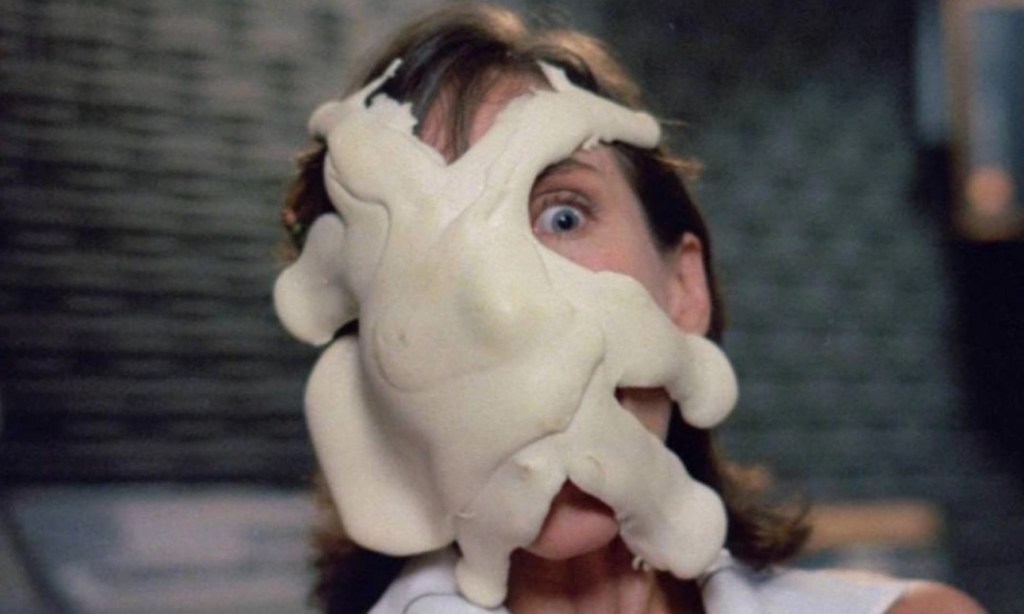
The Stuff (1985)
While George A. Romero was using his zombies to skewer American consumer society and the military-industrial complex, B-movie master Larry Cohen was doing material along the same lines with his somewhat campier, more directly satirical genre mashups. The Stuff is one of his more elaborate pranks on American mindsets as a gooey alien substance turns out to be so sweet and addictive that it’s soon marketed as a dessert treat in supermarkets—before it starts turning people into zombies, that is.
Cohen regular Michael Moriarty plays David “Mo” Rutherford, who is hired by the struggling ice cream industry to learn the origins of the Stuff and how to destroy it. Of course in the end everyone is just out to monetize the damn thing, even if it’s responsible for the deaths of anybody who slurps it up. The intersection of corporate greed and the junkiest of junk foods is what The Stuff is interested in, and while the movie was poorly received upon release, its mix of satire and horror remains sharp.
Innerspace (1987)
Ever since Fantastic Voyage came out in 1966, movies about miniaturized people going inside the human body have been unfortunately few and far between (Fantastic Voyage itself has inexplicably yet to be remade). Leave it to genre historian/filmmaker Joe Dante (The Howling) to try and get the job done, however. Dante’s Innerspace stars Dennis Quaid (who oddly seemed a staple of ’80 sci-fi), as a miniaturized pilot in a submersible craft who is injected into an unassuming grocery store clerk (Martin Short) to keep the technology away from the bad guys who want it.
Although the movie apparently started out as a more serious project, it turned into a comedy involving multiple shrinkings, as well as Quaid exiting Short via saliva as Short kisses Quaid’s girlfriend (Meg Ryan). Critics were generally kind and the movie even won the Oscar for Best Visual Effects, but the box office was tepid. Perhaps nobody wants to really see what we look like on the inside?
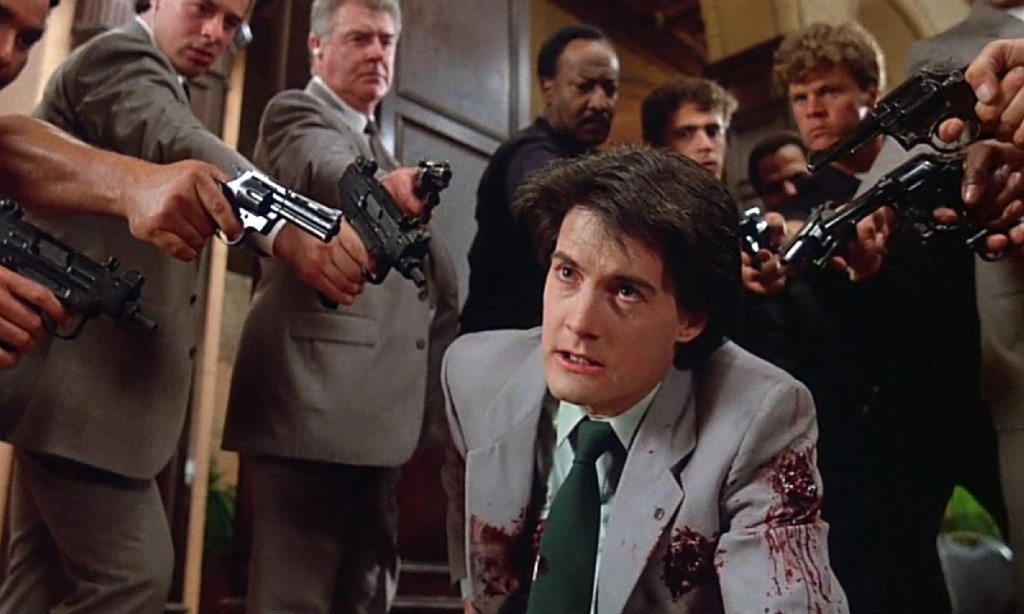
The Hidden (1987)
A smallish hit at the time of its release, The Hidden is a mix of alien invasion thriller, serial killer tale, and police procedural. Michael Nouri plays a Los Angeles detective named Beck investigating a rash of violent crimes perpetrated by citizens with seemingly no motive and no prior criminal record. He’s joined on the case by FBI agent Gallagher (Kyle MacLachlan), who reveals that the real killer is an alien that can jump from body to body; Gallagher knows this because he too is from the same species, and has been pursuing the killer for the murder of his family.
Gritty, violent, and tightly constructed, The Hidden is directed by Jack Sholder (A Nightmare on Elm Street 2: Freddy’s Revenge) and written by Bob Hunt, aka Jim Kouf (Grimm). It mashes up its genres almost perfectly, a few leaps in logic aside, and manages to be highly entertaining for most of its compact runtime. We wouldn’t be surprised if MacLachlan’s turn here as an (impostor) FBI agent helped land him his signature role as Agent Cooper on Twin Peaks, and we’ve seen the cop-partners-with-fantastical-creature scenario play out in later efforts like Alien Nation and Bright.
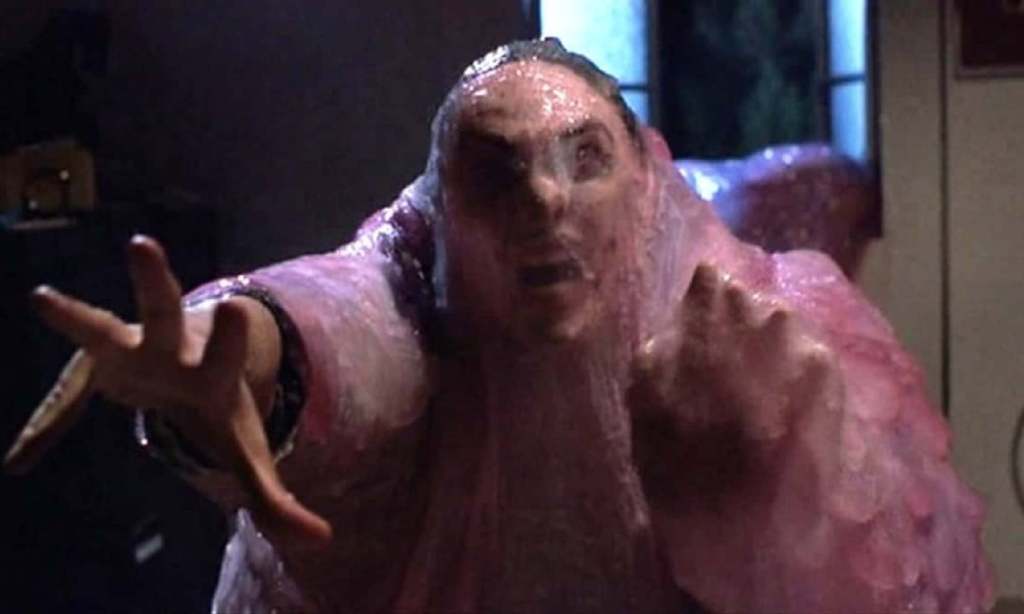
The Blob (1988)
It’s widely acknowledged among sci-fi and horror fans that Invasion of the Body Snatchers (1978), The Thing (1982), and The Fly (1986) constitute the Holy Trinity of genre remakes. But if we wanted to contemplate at least honorary or adjacent members of that hallowed bunch, we could certainly take a good, long look at Chuck Russell’s reimagining of the classic 1958 B-movie that launched the career of Steve McQueen and made a pile of jelly into one of the most iconic monsters of its era.
“Reimagining” isn’t quite the right word for Russell’s take on the material: his film pretty much tells the same story of the blob overrunning a small town and consuming a good number of its inhabitants, only instead of an alien life form that drops to Earth in a meteorite, it’s revealed to be a form of bacteria created as a weapon in a secret military experiment. The conspiracy theory twist modernizes the story to some degree, but the fun is still in watching the monster gruesomely devour the townspeople thanks to makeup effects that they never imagined in the ‘50s. Sadly, it didn’t gel very well with either critics or audiences at the time, but The Blob has since been reappraised, if not quite enough to join the Trinity.
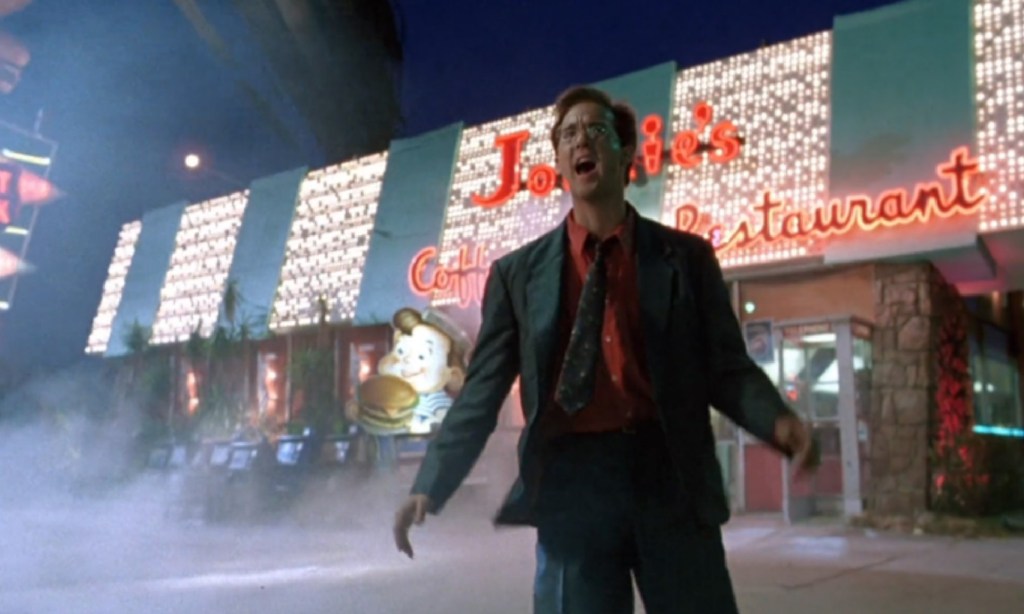
Miracle Mile (1988)
What would you do if you accidentally found out that the world was ending in a little over an hour? For Harry (Anthony Edwards), who picks up a call on a pay phone only to hear that a nuclear attack is imminent, the time is best spent looking for the girl (Mare Winningham) he just fell in love with earlier that day. Not even sure if the attack is real, Harry watches LA descend into chaos around him but stays committed to seeing her face one more time.
Named after the LA neighborhood in which it takes place, writer/director Steve De Jarnatt’s small film looks very much of its time and budget now. But it is still a suspenseful, surprisingly funny, and ultimately affecting look at how we face the end of everything and whether we do it with our dignity intact. A sense of genuine fear grips the second half of the film, and the incredibly bleak ending rings nightmarishly true.
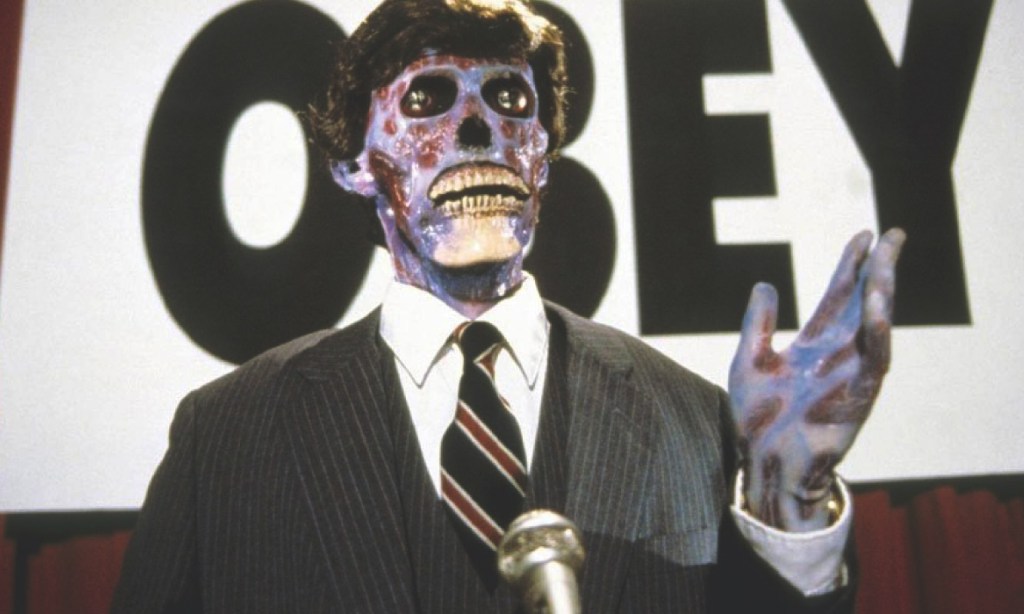
They Live (1988)
Yes, we all know now that John Carpenter’s ultimate conspiracy theory movie—in which aliens, their true form only visible through special glasses, have covertly taken over a complacent and greedy society—is generally regarded these days as one of his best and most thematically ambitious films. But back when it first came out, while it did modestly well at the box office, it was dismissed by critics and seemed to fade quickly from view.
Time and the long arc of film criticism has been kinder to it since, even if it’s wearying to see some of today’s elected officials take its outlandish mythology to heart. Still, while it may be a bit dated in a number of aspects (including Roddy Piper’s stilted, borderline amateurish performance), Carpenter’s incisive view of consumer society and corporate dominance remains sharply satirical and unsettling. Paired with its predecessor, the terrifying science-meets-religion apocalypse of Prince of Darkness, They Live offers a bizarrely sobering look at the reality behind our reality.
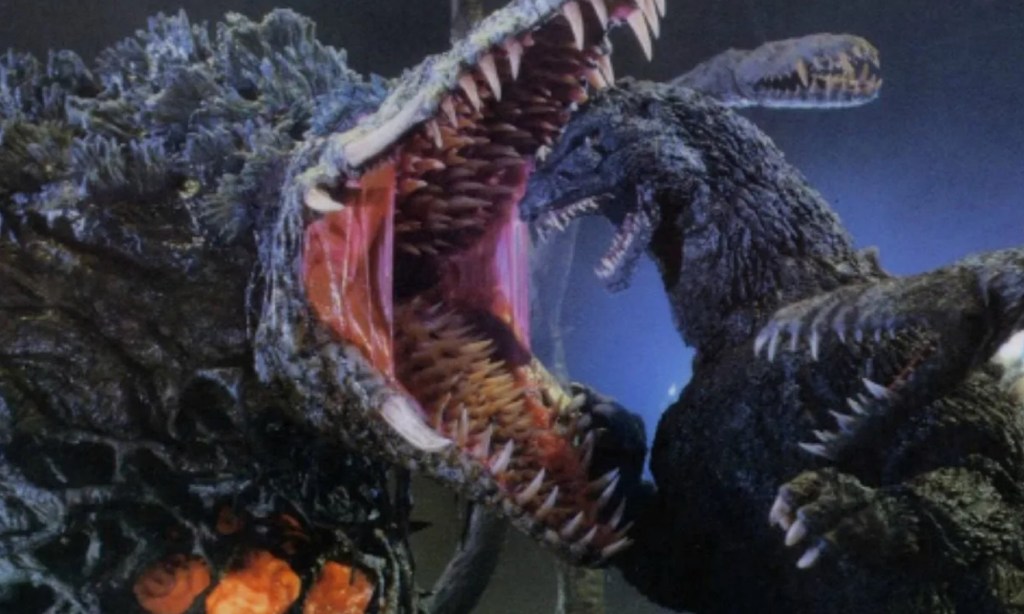
Godzilla vs. Biollante (1989)
This somewhat unheralded dark horse in the longest-running franchise in all of sci-fi cinema serves as an important bridge between the first 35 years of Godzilla’s screen career and the second. After 1985’s The Return of Godzilla essentially rebooted the series and steered it away from its kiddie-friendly tone to the darker vibe of the original 1954 film, Biollante pushed the series further in that direction while also upping the quality of the script, the blocking, the production values, and the visuals. That paved the way for genuinely great entries like 1991’s Godzilla vs. King Ghidorah and 1995’s Godzilla vs. Destoroyah.
Visionary in its own way, thanks to the personal touch of writer-director Kazuki Omori (given a creative freedom rare in the series), Biollante features a newly menacing Godzilla going up against one of his most unique and even poetic enemies, with the subtexts about nuclear power and biotech engineering ever-present as always. If you want to experience the moment when the Godzilla franchise “grew up,” paving the way for a resurgence of the kaiju genre, this is arguably the film in which it happened.
